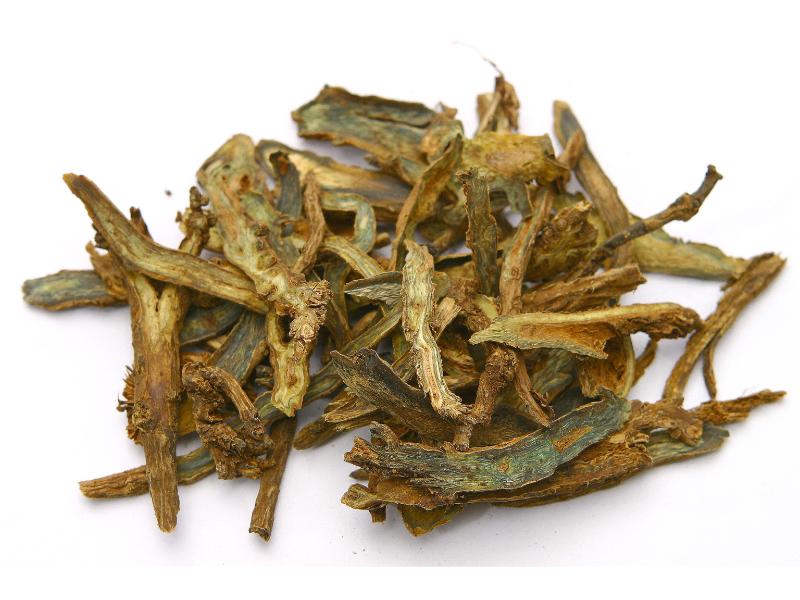Search in medicinals
Scutellariae Radix
Scutellaria [root]
黄芩 〔黃芩〕 huáng qín

Alternate English names: Baikal skullcap [root]
Alternate Chinese names: 腐肠 fǔ cháng; 黄文 huáng wén; 虹胜 hóng shèng; 经芩 jīng qín; 印头 yìn tóu; 内虚 nèi xū; 空肠 kōng cháng
Kingdom: Plant
Origin in PRC Pharmacopoeia: Scutellaria baicalensis Georgi. (PRC Pharmacopoeia)
Origin in unofficial sources: Scutellaria baicalensis Georgi*; Scutellaria viscidula Bge.; Scutellaria amoena C.H. Wright; Scutellaria ikonnikovii Juz.; Scutellaria likiangensis Diels; Scutellaria hypericifolia Lévl.; Scutellaria rehderiana Diehls
Use: Medicinal
Category: Heat-clearing agents / Heat-clearing dampness-drying agents
Properties: Bitter; cold.
Channel entry: Lung, stomach, gallbladder, and large intestine channels.
Actions and indications:
- Clears heat and dries dampness: Damp warmth or summerheat-damp with oppression in the chest and nausea and vomiting; damp-heat obstructing the center with glomus and fullness, and
vomiting and retching ; jaundice; heat strangury (rè lìn); diarrhea and dysentery. - Drains fire and resolves toxin: Lung heat cough; febrile disease with vexation and agitation;
lesser yáng disease ; toxin swelling of welling-abscesses andsore s. - Cools the blood and stanches bleeding: Bleeding from frenetic movement of hot blood, such as vomiting of blood (blood ejection), nosebleed, bloody stool, or flooding and spotting.
- Eliminates heat to quiet the fetus: Stirring fetus due to heat.
Dosage and method: Oral: 3–9g in decoctions; use in pills and powders. Topical: Decoct as a wash; grind to a powder and sprinkle on the affected area.
Warnings: The bitter cold nature of huáng qín can damage the stomach, so it is unsuitable for patients with spleen-stomach vacuity cold.
Product description: This is a cylindrical or spindle-shaped root up to 30 cm long and 1–4 cm thick. The head has usually suffered damage. Older roots often have rotted wood exposed. The outer surface is yellow, with contorted longitudinal wrinkles. It has numerous wart-like scars from removed branch roots. The decocting pieces are 1 mm thick transverse or oblique slices, whose cut face is yellowish green, with clearly visible brown annular rings, yellowish green bark, yellow wood, distinct ducts configured in broken circles, and a brownish core.
Quality: Hard, long, yellow roots with few stem bases and with hard cores are the best.
Production area: Héběi, Shānxī, and Mongolia.
Etymology: In the main name huáng qín 黄芩, huáng 黄 means yellow, and qín 芩 is said to be the same as 黔 (qián), meaning black.
Back to search result Previous Next